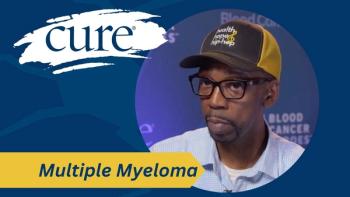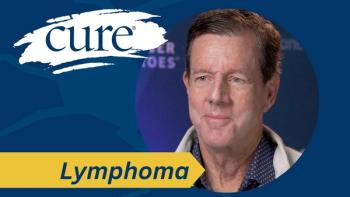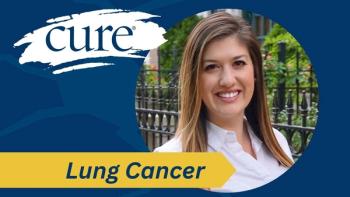
Identifying Cardiovascular Disease Risk in Cancer Survivors
Key Takeaways
- Cancer treatments elevate CVD risk, notably in blood and lung cancers, due to advanced diagnosis and aggressive treatments.
- Chemotherapy and radiotherapy increase heart damage risk through inflammation and vessel hardening.
The risk of cardiovascular disease is elevated in cancer survivors, regardless of treatment, and is influenced by cancer type and treatment-related factors.
The side effects of cancer treatment can be overwhelming for patients and their families. It’s important for cancer survivors to pay attention to any heart health changes and to report them to their doctors, an expert told CURE®.
Suzanne Orchard spoke with CURE® via email to highlight the impact of cancer treatments on cardiovascular disease (CVD) risk and emphasized the importance of self-monitoring signs of CVD, cancer types associated with higher risk of CVD, the role of aspirin and more.
Orchard is a senior research fellow in the School of Public Health and Preventive Medicine and the director of the ASPREE Extension at Monash University in Melbourne, Australia.
CURE®: What is the main takeaway from this study for cancer survivors regarding their risk of cardiovascular disease (CVD)?
Orchard: The risk of cancer-related CVD was elevated in all individuals post cancer diagnosis, and not just in those receiving cardiotoxic chemotherapies. This risk remained even after accounting for shared risk factors.
How does this study contribute to our understanding of the relationship between cancer and CVD in older adults?
Although we know that there is an increased risk of [side effects] after cancer diagnosis (from both the cancer itself as well as from treatment strategies), prior evidence was based on studies from the general population, and we now know the level of risk in older persons is similar. Additionally, we were able to explore different aspects of cardiovascular disease, such as hospitalization for heart failure, heart attack and stroke, as well as explore cancer types and treatment modalities.
Are certain types of cancer more associated with a higher risk of CVD?
We found an elevated risk [in patients] with blood and lung cancers. Both of these cancers are typically more advanced at the point of diagnosis, which would mean a higher tumor burden — and therefore cancer-related inflammation — more aggressive treatment regimens, and also prior deconditioning of the individual, all leading to increased CVD risk. Our data also suggested higher risks with prostate and colorectal cancer, but this data was not statistically significant.
How do treatments like chemotherapy and radiation therapy impact the risk of CVD in cancer survivors?
There are a number of chemotherapy drugs that are known to cause stress and damage the heart, and these are called cardiotoxic drugs. Both chemotherapy and radiotherapy can lead to increased levels of inflammation, which leads to damage to the heart and vessels. Additionally, radiotherapy near the heart (thoracic) can cause direct damage through hardening of vessels and over time, tissue becoming fibrous and tough.
For patients who have already survived cancer, what steps can they take to reduce their risk of CVD?
Cancer survivors should be aware of their cardiac health and speak to their health care providers if they notice symptoms, such as chest pain or shortness of breath. Changes to treatment regimens may be helpful in minimizing the risk if early signs of cardiac stress are found. Additionally, simple interventions such as exercises that elevate the heart rate (brisk walking, swimming), and managing risk factors carefully. [This may include] ensuring blood glucose levels are well controlled if they are diabetic, controlling blood pressure if [they have hypertension], etc.) can also minimize risk.
Did this study find that aspirin is effective in reducing CVD risk in cancer survivors?
No, and this was one of the novel aspects of our study. The CVD risk in those taking aspirin was the same as that in those not taking aspirin, and so, we found no benefits in terms of decreasing CVD risk post-cancer diagnosis.
Are there any potential side effects or risks associated with taking aspirin for cancer survivors?
We do know that low-dose aspirin increases the risk of bleeding, and this was one of the main outcomes of the ASPREE clinical trial (a double-blind, placebo-controlled randomized trial of low-dose aspirin in older adults). So, for anyone considering taking aspirin for purposes other than secondary CVD prevention (as prescribed by their doctor), a conversation with their primary care provider should occur first, as there are a number of things to consider before establishing if any benefits would outweigh any potential harms such as bleeding.
When should cancer survivors discuss the potential benefits and risks of aspirin with their doctor?
As soon as they are diagnosed with cancer, as we know the elevated risk of CVD is present at this point. However, it is worth noting that in our study, we did not see any benefits in terms of reducing CVD risk in aspirin users, so the risk of bleed should be part of the discussion.
What are the next steps in research to better understand the link between cancer and CVD?
Our study was underpowered for some of the analyses (sample sizes were not large enough for some groups) such as some of the cancer types and treatment modalities. Thus, establishing whether certain cancer types and certain treatment modalities confer differing risks would be important in guiding physicians on which options are associated with lower risk. Understanding the biological pathways that lead to increased CVD risks will also help identify potential preventive agents or strategies.
Are there any ongoing clinical trials investigating new treatments or strategies to reduce CVD risk in cancer survivors?
Yes, many research groups are trying to establish more evidence on treatments and associated CVD risks. For example, the PROACT (preventing cardiac damage in patients treated for breast cancer and lymphoma) trial looked at the effectiveness of [Vasotec (enalapril)] in preventing cardiotoxicity among patients with breast cancer and non-Hodgkin lymphoma undergoing high-dose anthracycline-based chemotherapy and only recently reported their results in 2024, finding no benefit for adding [Vasotec] to standard care during chemotherapy. Also, the PRADA II (prevention of cardiac dysfunction during adjuvant breast cancer therapy) trial is a randomized, placebo-controlled study of [Entresto]/[Diovan] in in prevention of cardiotoxicity in patients receiving [presurgial] or [postsurgical] therapy containing anthracyclines. This is an identified area of need, so there will be other studies aiming to identify better ways to minimize risk.
This transcript was edited for clarity and conciseness.
For more news on cancer updates, research and education, don’t forget to




